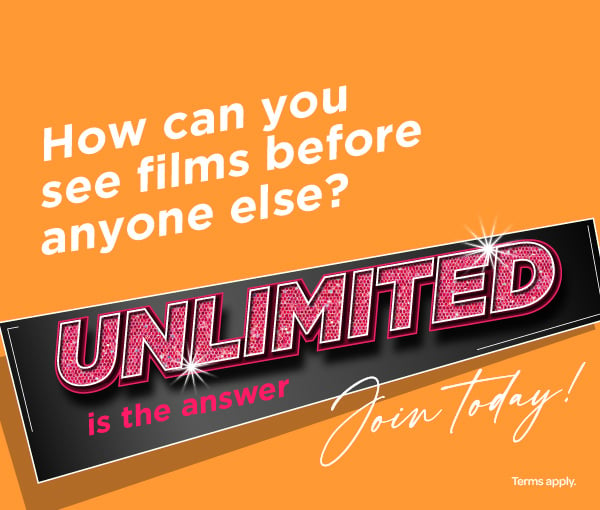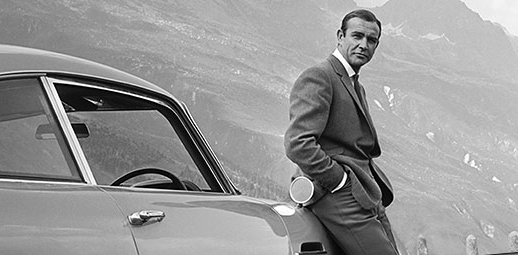
James Bond movie No Time To Die arrives in Cineworld on 30th September, and we're counting down the days by revisiting all the 007 movies in chronological order of release.
In honour of Daniel Craig's swan-song as 007, we're taking a nostalgic trip back through time. This week: Goldfinger...
What is the story of Goldfinger?
British secret service agent James Bond/007 (Sean Connery) is tasked with investigating wealthy bullion dealer Auric Goldfinger (Gert Frobe). Mi6 wants to know how the mysterious business magnate is shipping his gold across international borders undetected, a journey that takes 007 from Goldfinger's factory in Switzerland to his stud farm in Kentucky.
It's there that Goldfinger reveals his diabolical and brilliant plan: he will irradiate the gold reserves in Fort Knox, thereby increasing the value of his own bullion deposits. He plans to do this with the help of Pussy Galore (Honor Blackman) and her aerial squad of pilots – so can 007 prevent this catastrophe?
With Goldfinger's formidable henchman Oddjob (Harold Sakata) lurking on the fringes, it's a dangerous mission – but when did that ever stop the world's greatest spy?
How did Goldfinger get made?
By 1964, the James Bond franchise was an established success. The relatively down to earth and gritty nature of both Dr No and From Russia With Love translated author Ian Fleming's British spy into a certified pop culture phenomenon, replete with expensive merchandising deals and impressive box office results.
Goldfinger, however, was the watershed moment where the Bond franchise became a marketable brand in its own right. This was the first in the series to deviate from any notion of Cold War topicality, veering into the realm of the tongue in cheek to cement 007 as the ultimate in escapist fantasy entertainment. It was a gear change that proved enormously influential: in the wake of Goldfinger, no plot was too outlandish, no location too exotic, and no villain too scene-stealing.
It's not an overstatement to describe Goldfinger as the most influential movie in the Bond canon. Any number of elements were secured in the pop culture consciousness, from Sean Connery's confidence in the title role to the ludicrousness of the villain's scheme and the rip-roaring melody of the Shirley Bassey title song. Goldfinger became untethered from the troubled political climate of the time, allowing audiences to vicariously revel in a boys' own adventure replete with a globe-trotting sense of derring-do.
It was Connery's third go as Bond, and by this time his star status was indestructible. However, there was a key personnel change behind the scenes: director Terence Young, who brought relative plausibility to the first two movies, was replaced by Guy Hamilton, who accentuated the sly humour and daft set-pieces. Hamilton in fact knew Ian Fleming, having served with him in the Royal Navy during World War II, and was selected for the job by producers Albert R. 'Cubby' Broccoli and Harry Saltzmann.
Broccoli and Saltzman had in fact intended to make Thunderball the third Bond movie. However, an ongoing legal dispute between Fleming and the project's screenwriter Kevin McClory saw that idea shelved. (Thunderball instead became the fourth movie in the series; McClory eventually got his movie off the ground with 1983's Never Say Never Again, starring Connery.)
At the same time, stunt coordinator Bob Simmons (who doubled for Connery during the gun-barrel sequence on the first couple of movies), and production designer Ken Adam both returned, having been absent from the previous movie, From Russia With Love. Screenwriter Richard Maibaum also returned to pen his third Bond screenplay, although his draft yo-yoed back and forth owing to disagreements with both Saltzman and Connery.
Maibaum fixed the central conceit of Fleming's novel, whereby Goldfinger attempts to empty Fort Knox. In the movie, the (somewhat) more rational explanation is that the gold will stay where it is, but irradiated by an atomic bomb. This in turn will make Goldfinger the wealthiest man in the world. However, the script later bounced between the likes of Paul Dehn (later to pen Planet of the Apes) and an uncredited Wolf Mankowitz, who had contributed to the screenplays for Dr No and From Russia With Love.
German actor Gert Frobe was cast as Goldinger for his imposing physical presence, but couldn't speak a word of English. (He was later dubbed by stage actor Michael Collins.) It's easy to see why the character is regarded as one of the finest Bond villains of all time. So devious is his plan, and so calm is Goldfinger in his demeanour, that one suspects if Bond will be able to foil him.
This is exemplified in the classic laser sequence whereby Bond's most treasured possession is agonisingly threatened – rarely have we seen 007 sweat so much. In response to Bond's question "Do you expect me to talk?", Goldfinger famously replies, "No Mr Bond, I expect you to die!" – a much-parodied line that nevertheless cements him as one of 007's most dangerous enemies.
And if we're talking enemies, they don't come better than Harold Sakata as Oddjob. The bowler hat-throwing heavy has been spoofed many times since (including a shoe-throwing nemesis in Austin Powers), but there's no denying Sakata's quietly menacing presence. (This is accentuated by the sinister use of triangle and strings on John Barry's terrific soundtrack.)
Hailing from Hawaii, the actor had wrestled professionally as Tosh Togo, and competed for the United States in weightlifting at the 1948 Summer Olympics in London. His physical abilities are very much on display in the climactic Gold Knox fight scene with Bond. When filming with Sakata, Connery sustained a painful judo chop to the back that almost knocked him out cold, while in the Fort Knox climax, Sakata's hand was badly burned during Oddjob's electrocution death.
On the subject of the showdown in Fort Knox, it remains one of the finest examples of Ken Adam's brilliantly imaginative production design. The filmmakers were denied access to the real location, so Adams ran wild with a "cathedral of gold", subsequently been hailed as some of his finest work in the series. (Later sets including the hollowed-out volcano in You Only Live Twice and the submarine-eating Liparus tanker in The Spy Who Loved Me also continue to rank highly.)
Adam revealed to The Guardian that a combination of Cubby Broccoli's connections and the Kennedy family's love of James Bond helped in the conception of the Fort Knox sequences.
"No one was allowed in Fort Knox but because [producer] Cubby Broccoli had some good connections and the Kennedys loved Ian Fleming's books I was allowed to fly over it once," Adam said. "It was quite frightening – they had machine guns on the roof. I was also allowed to drive around the perimeter but if you got out of the car there was a loudspeaker warning you to keep away. There was not a chance of going in it, and I was delighted because I knew from going to the Bank of England vaults that gold isn't stacked very high and it's all underwhelming. It gave me the chance to show the biggest gold repository in the world as I imagined it, with gold going up to heaven. I came up with this cathedral-type design. I had a big job to persuade Cubby and the director Guy Hamilton at first."
So convincing was Adam's design that production company United Artists received letters from people enquiring how a British production company had gained access to Fort Knox. Adam said: "In the end I was pleased that I wasn't allowed into Fort Knox, because it allowed me to do whatever I wanted."
Adam's brazenly ridiculous yet wonderful concepts underline the Goldfinger philosophy. And this was also the moment where gadgets first made their mark on the Bond universe, namely the immediately iconic Aston Martin DB-5 that Bond drives in Switzerland. Complete with a bullet-proof plate, oil-dispensing slicks and tire-destroying spokes, the car become as important a character as Bond himself, setting the (gold) standard for all of 007's wheels.
After a product placement deal was cut with Aston Martin, two cars were built, one with gadgets and one without. Hamilton conceived the revolving number plate idea and his stepson proposed the ejector seat. (The model of the car was the most current at the time of the film's production – in Ian Fleming's novel, Bond drives a DB Mark III.) The inclusion of Goldfinger's deadly laser replaced the circular saw featured in the novel – Ken Adam collaborated with two Harvard scientists over its depiction in the movie. The beam itself was added in post-production, and the close-ups of the laser scything through the gold towards Bond were undertaken with a blowtorch from beneath.
Bond is introduced to the car by Q, and Goldfinger established the template of all such briefing scenes. Namely, actor Desmond Llewelyn's fluid delivery of nonsensical, gadget-laden dialogue, and Bond's amusingly deadpan reaction to said nonsense. "I never joke about my work, 007," snaps Q when Bond accuses him of joking about the ejector seat.
The licencing of the Aston Martin and the elaborate nature of the sets contributed to the (for the time) expensive $3 million budget. It was the most expensive Bond movie to date, and the film's opulence is mirrored in both the locations and also the repeated motif of gold itself. Graphic designer Robert Brownjohn immediately establishes this during the opening credits, featuring a golden woman (Margaret Nolan) onto whose body Connery is projected. And then of course, there's one of the film's most famous images: gold-painted Shirley Eaton as the ill-fated Jill Masterson.
Established as a dalliance for Bond as he observes Goldfinger cheating at cards in Miami, Masterson suffers one of the most surreal and awful fates of any Bond character. She dies of skin suffocation – a reportedly implausible mode of execution, but one that became accepted as fact. Eaton was painted from head to toe for the sequence, and featured on the front cover of Life magazine in gold-hued profile. Note also the 'Au' on the number plate of Goldfinger's Rolls Royce – this is the chemical symbol for gold.
Of course, several aspects of Goldfinger have not aged well. At one point, Bond compares drinking lukewarm Don Perignon champagne to "listening to The Beatles without earmuffs" – a reflection of how the Fab Four had reflected popular culture at the time, but in hindsight it makes the Bond character seem hopelessly out of touch. And the treatment of Honor Blackman's character Pussy Galore may have amused at the time but now it causes winces, particularly when it's established she will turn from lesbian to heterosexual after a clinch with Bond, and therefore help him bring down Goldfinger.
Nevertheless, for the most part Goldfinger holds up as a stylish and propulsive Bond adventure, let down only by some poor back-screen projection during the driving sequences, and also the scenes involving Goldfinger's private Lockheed jet. Locations ranged from Miami to Kentucky and Bond's spiritual home of Pinewood Studios, although one of the most famous locations was relatively unassuming. Stoke Park golf club near Pinewood acted as the location of the famous scene where Bond entraps Goldfinger and again exposes him as a cheat.
Poignantly, Goldfinger was the final Bond movie overseen by Ian Fleming during his lifetime. He passed away in August 1964, one month prior to the film's premiere in London, and just as Bond's big screen potential reached thrilling new heights.
READ MORE
- No Time To Die and the 6 James Bond movies we never got to see
- 7 actors who could play James Bond after Daniel Craig retires
- Shaken and stirred! Daniel Craig's defining 007 moments
What music is on the Goldfinger soundtrack?
Bond's musical identity was cemented via John Barry's Goldfinger score, one of the most exciting and rambunctious in the series. This was the first time Barry exerted autonomy over both the musical underscore and the opening title track, written by the composer and performed by a never-better Shirley Bassey. In fact, Goldfinger was the first Bond movie to open with a song – Dr No began with an instrumental medley, and From Russia With Love featured a lush instrumental rendition of the song theme.
By asserting Bassey's powerhouse vocals over the striking credit designs, Barry established a successful musical template that endures in the franchise to this day. He later described Goldfinger as his personal favourite score in the series, revealing on the DVD commentary that the movie was "the first time I had complete control, writing the score and the song". The recording sessions were overseen by The Beatles producer George Martin, and Barry later said of Bassey: "Nobody could have sung it like her".
The lyrics, which featured contributions from Anthony Newley and Lesley Bricusse, establish both the themes of gold and also the prowling menace of the Goldfinger character. It is, in essence, a statement of intent as to what audiences can expect from the next two hours, and this sense of style carries into the underscore itself.
Barry adapts the Goldfinger melody in a variety of ways throughout the movie, establishing wailing trombones and muted trumpets that give a sexy, sultry feel to proceedings – perfect for reflecting Bond's charisma. The composer hailed from a jazz background, and had performed with his own group The John Barry Seven, so his rhythmic intuition and command of the brass section was perhaps a given. All facets of the Goldfinger score, from the rousing 'Dawn Raid of Fort Knox' to the pensive xylophone and timpani of 'Auric's Factory', make this the archetypal James Bond movie score, and one of the finest in Barry's illustrious career.
Interestingly, producer Harry Saltzman intensely disliked Bassey's opening title song, and wanted it removed. Only time constraints (there was little time to record another) and the intervention of Cubby Broccoli saw it remain. The irascible producer would clash with Barry over many ensuing James Bond songs, before he eventually departed the franchise with 1974's The Man with the Golden Gun.
How was Goldfinger received?
Goldfinger hosted its London premiere in Leicester Square on 17th September 1964, and the movie went on release in the UK the following day. An extensive merchandising push included the aforementioned Life cover with Shirley Eaton, the presence of two Aston Martin cars at the 1964 New York World's Fair and the onset of a long-running relationship with Corgi Toys, whose replica of the DB5 became the biggest-selling toy of that year. (It famously featured many of the actual car's gadgets, including simulations of the ejector seat and wheel spikes.)
Additional tie-ins ranged from board games to action figures and clothing lines, all of which helped further push James Bond's profile into the stratosphere. The movie went on to gross a phenomenal $125 million worldwide against its $3 million budget, making Goldfinger one of the most profitable movies of its day. In fact, The Guinness Book of World Records went on to list Goldfinger as the fastest grossing film of all time.
The film's tongue in cheek sense of fun was greeted with critical acclaim. Derek Prouse of The Sunday Times said of Goldfinger that it was "superbly engineered. It is fast, it is most entertainingly preposterous and it is exciting". The movie won the Oscar for Best Sound Effects Editing, making it the first Bond movie to win an Academy Award. (Interestingly, only two others have clinched one: Thunderball for Best Visual Effects, and Skyfall for Best Original Song.)
John Barry's rousing score received a Grammy nomination and the movie's reputation has weathered well to this day. It's currently the second-highest-rated Bond movie on review aggregate website Rotten Tomatoes with a score of 96%, equal to From Russia With Love, lagging just behind Dr No (98%), and coming in ahead of Casino Royale (95%). Late, great film critic Roger Ebert declared the movie to be his favourite Bond film, and later added it to his 'Great Movies' list.
Goldfinger's impact at the time would ripple down through the decades, establishing a movie template from which producers have been reluctant to deviate. By shaking and stirring audience expectations, Connery, Broccoli, Saltzman and the rest of the cast and crew defined pop culture in ways that only a handful of other franchises (Star Wars, Harry Potter, Marvel et al) have managed.
What was the next movie in the James Bond series?
Thunderball was the next Bond movie, released in 1965.
When is No Time To Die released in the UK?
No Time To Die is released on 30th September. Don't forget to tweet us your favourite James Bond movies @Cineworld.

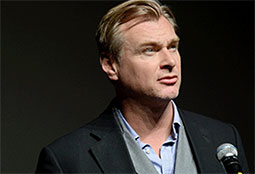

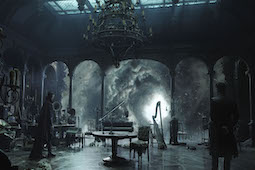
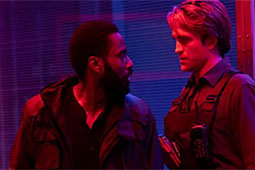
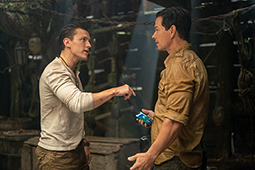
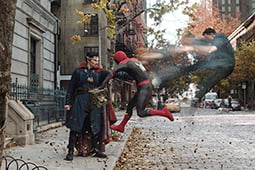
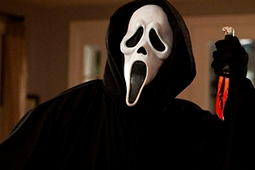
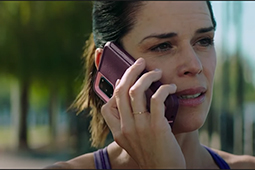

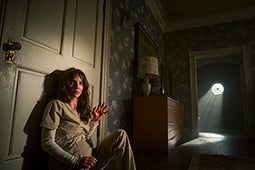



.jpg)
.png)

